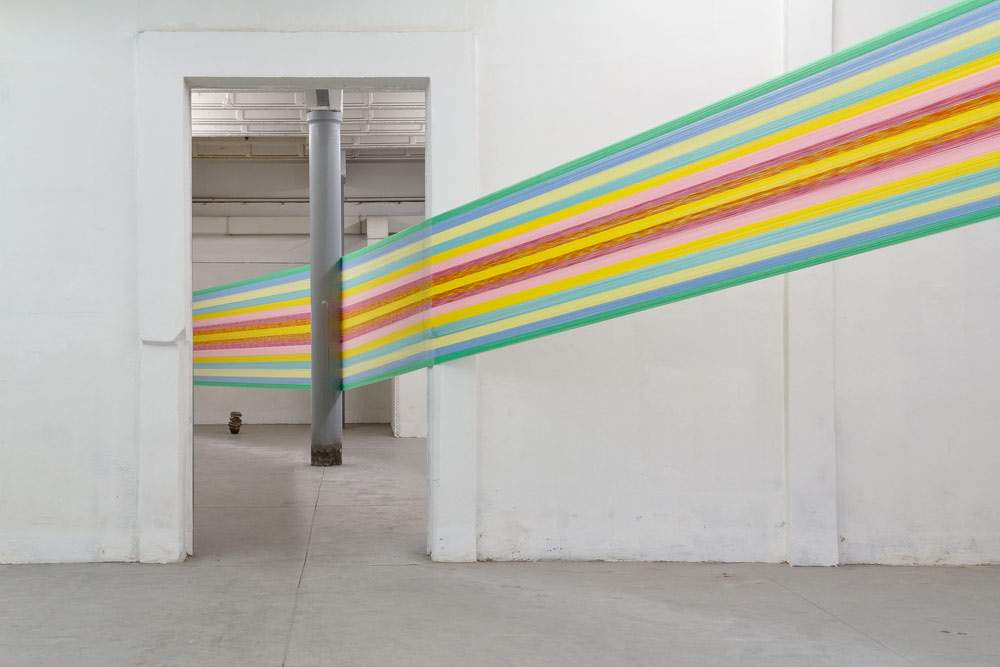Matteo Nasini's sounding sculptures on display for the first time in a solo exhibition in an Italian museum
In Pesaro, from July 21 to October 7, 2018, the Fondazione Pescheria - Centro Arti Visive hosts the exhibition Neolithic Sunshine, Matteo Nasini ’s (Rome, 1976) first solo show in an Italian museum institution, entirely conceived for this occasion. The exhibition, curated by Marcello Smarrelli, includes numerous sculptures and sound installations (i.e. Matteo Nasini’s most typical realizations), characterized by some recurring aspects in the artist’s poetics: sound and its origins, the use of slow manual practices, and technological experimentation. As the title suggests, the exhibition proposes a leap backwards more than thirty thousand years, the era to which the first findings of animal parts used as musical instruments date back.
The artist identified and selected, from the collections of several major natural history museums, animal fossil finds that can be traced back to the earliest forms of acoustic instruments: tusks, horns, and bones were scanned and reproduced in ceramic with a 3-D printer, to be transformed into sound sculptures. In addition to their formal qualities, these rudimentary instruments, which hark back to archaic and ancestral imagery, retain their intrinsic function in their sonic potential.
The installation Neolithic Sunshine, created in the Chiesa del Suffragio, is a sound piece composed by the artist, a graduate of the Conservatorio di Santa Cecilia in Rome, performed by an ensemble of musicians using the instruments/sculpture and diffused in the space with a system that follows the circular shape of the building. The piece, on the one hand proposes an attempt to evoke primordial sounds, and on the other hand allows us to listen to the extinct and unheard sounds of these millennia-old fossils. The instruments were placed on a podium in the center of the dodecagonal hall, surrounded by a structure made of woolen threads, entitled Tent vestige. It is a monumental and at the same time ephemeral installation, which with its colorful lines defines a metastance capable of connecting interior and exterior: the bundle of threads, in fact, starts from the Liceo Artistico Mengaroni, in front of the Pescheria Visual Arts Center, crosses the square of Creativity and penetrates into the Church of the Suffrage, creating a sign in the urban context that emphasizes the ideal relationship between the three architectural spaces. In line with the setting of the Suffrage Church, The Lost Garden, the installation that occupies part of the Loggiato della Pescheria, also creates a golden chromatic environment, suggested by the presence of elements charged with primordial energy and traceable to the evocative idea of the find. A series of more than twenty sculptures, also made of woolen threads, scattered along the nave, refer to remnants of a nonexistent architecture, columns that support nothing, but refer to a ritual and fantastic space.
Also in the Loggiato della Pescheria, Nasini placed the installation Ruota, a large ceramic ring that recalls the archetypal forms of prehistoric architecture and the first tools created by man. Finally, serving as an ideal backdrop to the various exhibition episodes is Principio Selvatico, a large hand-embroidered tapestry: a view, a glimpse, a primitive passage, a lush and wild scenery in vivid and disturbing colors.
The idea of reconstructing the extraordinary moment when in an indefinite place and time man invented music is meant to be a tribute to the figure of the great musician and composer Gioachino Rossini, whose 150th year since his death is being celebrated, and to his Pesaro, named Unesco Creative City of Music in 2017.
Neolithic Sunshine can be visited daily (except Mondays) from 4:30 to 7:30 pm. It can be accessed with the Pesaro Cult card (it costs only 3 euros and can be purchased directly at the Pescheria Visual Arts Center), and teens and children under 18 get in free. For more information you can visit the Pescheria Visual Arts Center website.
 |
| Matteo Nasini's sounding sculptures on display for the first time in a solo exhibition in an Italian museum |
Warning: the translation into English of the original Italian article was created using automatic tools. We undertake to review all articles, but we do not guarantee the total absence of inaccuracies in the translation due to the program. You can find the original by clicking on the ITA button. If you find any mistake,please contact us.



























